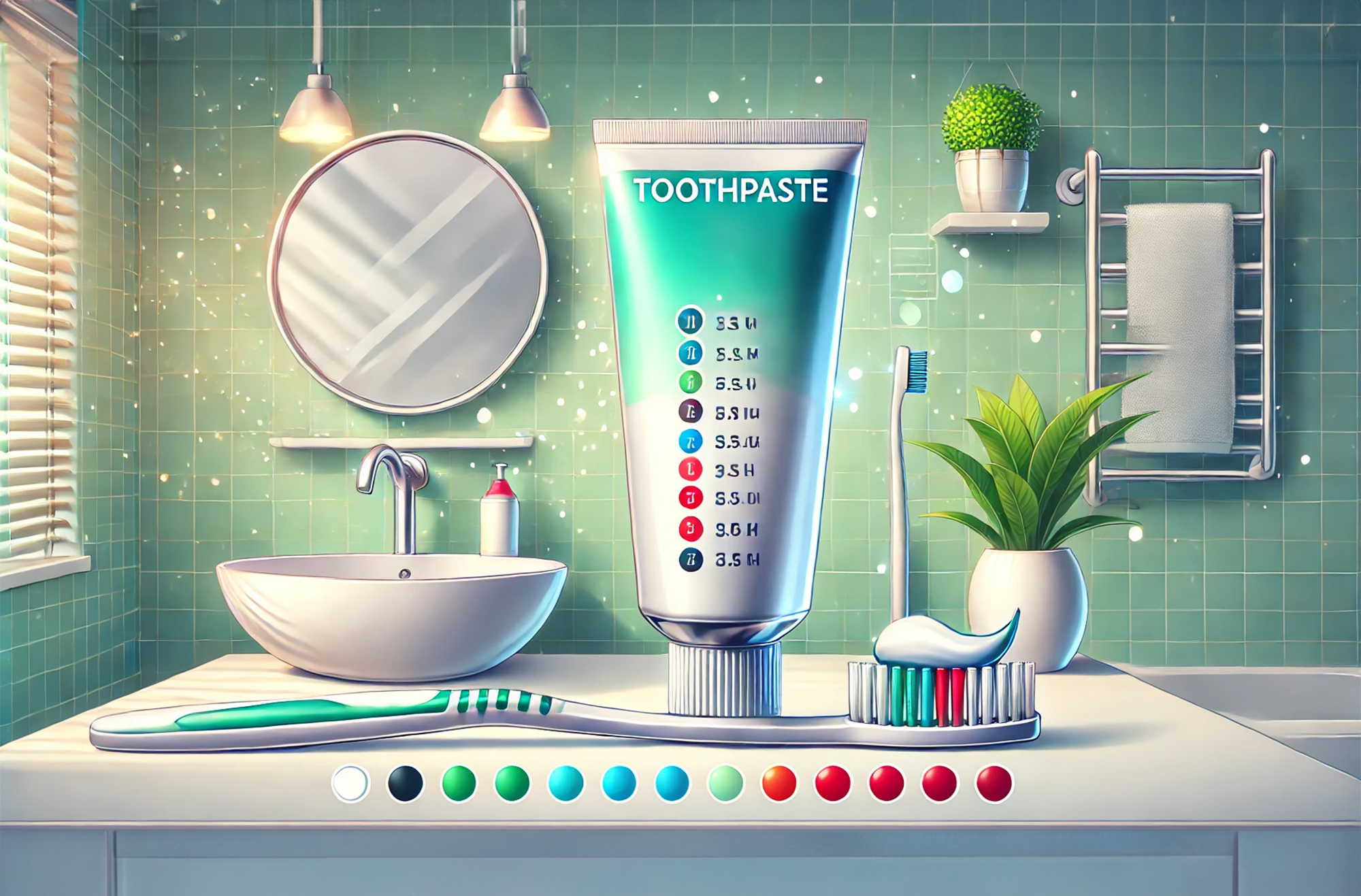Understanding Toothpaste Color Codes and Choosing the Best Toothpaste for Your Needs
Toothpaste is an essential part of our daily oral hygiene routine, but many people might overlook the details that can make a big difference in the health of their teeth and gums. One such detail is the small colored squares found on the back of toothpaste tubes. These marks, often referred to as toothpaste color codes, have sparked various myths and misconceptions. In this blog post, we will demystify these color codes, explain what they really mean, and offer tips on choosing the best toothpaste for your oral health.
What Are Toothpaste Color Codes?
You’ve probably noticed the small colored squares on the bottom of toothpaste tubes. The most common colors are green, blue, red, and black. There is a widespread belief that these colors indicate the ingredients or the chemical composition of the toothpaste, such as whether it contains natural or chemical ingredients. However, this is a myth.
The Truth About Toothpaste Color Codes:
Green Mark
- Myth: Some believe that a green mark indicates that the toothpaste is made from all-natural ingredients, free of any synthetic chemicals.
- Reality: The green mark is actually a “control mark” used in the manufacturing process. It helps machines know where to cut or fold the tube during production. It has no connection to the ingredients or the naturalness of the toothpaste. The content of the toothpaste should be determined by reading the ingredient list provided on the packaging, not by the color of this mark.
Blue Mark
- Myth: Blue is often thought to signify that the toothpaste contains both natural ingredients and medicinal additives, offering extra health benefits.
- Reality: Like the green mark, the blue color is simply another form of control mark. It is used for the same industrial purpose—to guide machines during the packaging process. The presence of medicinal ingredients like fluoride is best confirmed by checking the ingredient list and looking for endorsements from dental associations such as the ADA.
Red Mark
- Myth: There’s a common misconception that a red mark means the toothpaste contains a mix of natural and chemical ingredients, making it a less desirable option for those seeking natural products.
- Reality: The red mark, just like the others, is purely functional for the packaging process. It does not indicate any information about the balance of natural versus chemical ingredients in the toothpaste. The distinction between “natural” and “chemical” is also often oversimplified, as many natural substances are chemicals by nature.
Black Mark
- Myth: Black is sometimes interpreted as a warning sign, suggesting that the toothpaste is made entirely from synthetic chemicals, possibly making it less safe for use.
- Reality: This is perhaps the most misleading myth of all. The black mark is simply another control mark used in manufacturing and has nothing to do with the ingredients of the toothpaste. Toothpaste, regardless of this mark, contains various ingredients necessary for cleaning and protecting teeth, many of which are beneficial and approved by health authorities like the ADA and FDA.
These color codes are purely technical and are used in the packaging process to ensure the correct cutting and sealing of the toothpaste tubes. They have nothing to do with the quality, safety, or ingredient composition of the toothpaste.
What to Look for in a Toothpaste
While the color codes are not indicators of the toothpaste’s quality or composition, there are other factors that you should consider when choosing a toothpaste.
- Fluoride Content: Fluoride is a key ingredient in toothpaste that helps prevent tooth decay by strengthening tooth enamel. Ensure that the toothpaste you choose contains fluoride, as it is essential for maintaining oral health.
- Tartar Control: Tartar buildup can lead to gum disease and other oral health issues. If you’re prone to tartar buildup, consider a toothpaste that offers tartar control.
- Whitening Agents: If you’re looking for a brighter smile, toothpaste with whitening agents can help remove surface stains. However, be cautious with long-term use, as some whitening toothpaste can be abrasive.
- Sensitivity Protection: For those with sensitive teeth, look for toothpaste specifically designed to reduce sensitivity. These toothpaste typically contain ingredients like potassium nitrate or strontium chloride that help block pain signals.
- Natural Ingredients: If you prefer natural products, look for toothpaste that contains natural ingredients such as baking soda, aloe vera, and essential oils. However, ensure that the toothpaste still contains fluoride for effective cavity protection.
- ADA Seal of Acceptance: Always check for the American Dental Association (ADA) Seal of Acceptance on the toothpaste packaging. This seal indicates that the toothpaste has been tested for safety and effectiveness.
Choosing the Right Toothpaste for Your Needs
The best toothpaste for you depends on your specific oral health needs. Here are some tips to help you choose the right one:
- For Cavity Prevention: Look for toothpaste with fluoride.
- For Gum Health: Choose toothpaste that offers tartar control and contains antibacterial agents.
- For Whitening: Consider a toothpaste with gentle whitening agents but avoid those with harsh abrasives.
- For Sensitivity: Opt for a toothpaste formulated for sensitive teeth.
- For Natural Preference: Select a toothpaste with natural ingredients but make sure it includes fluoride.
External Sources;
American Dental Association (ADA)
European Federation of Periodontology (EFP)
Internal Links;
